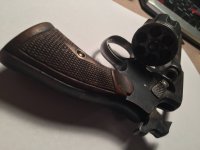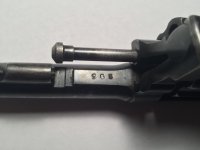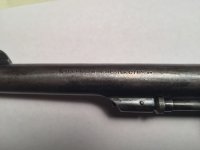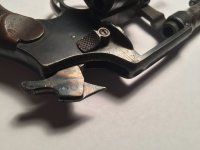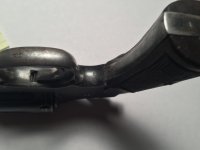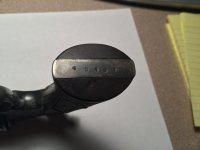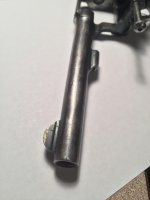Tangentabacus
New member
Hey all,
I unfortunately/fortunately inherited a revolver from my grandfather who just recently passed away. It says 32 Winchester on the barrel, but there's literally no marking anywhere else except on the bottom of the handle, a marking that says "SPAIN", 293, 40494. Just some numbers.
It's double action, no safety, not blued. Found some similar pistols online, but they had different rivet/screw patterns. Looked danged close though. Not really worried about the value other than sentimental as every grandfather that has passed has given me some sort of firearm and I plan to give them to my grand kids.
I'll post photos here in a second.
P.S. I have two other pistols that I got from him and maybe a couple rifles that I'll probably need help identifying sooner or later.
P.P.S. Also, the advance feature on the DA seems to have worn the drum out bad enough that one or two of the chambers won't advance sometimes. Anyone got any suggestions for fixing this?
I unfortunately/fortunately inherited a revolver from my grandfather who just recently passed away. It says 32 Winchester on the barrel, but there's literally no marking anywhere else except on the bottom of the handle, a marking that says "SPAIN", 293, 40494. Just some numbers.
It's double action, no safety, not blued. Found some similar pistols online, but they had different rivet/screw patterns. Looked danged close though. Not really worried about the value other than sentimental as every grandfather that has passed has given me some sort of firearm and I plan to give them to my grand kids.
I'll post photos here in a second.
P.S. I have two other pistols that I got from him and maybe a couple rifles that I'll probably need help identifying sooner or later.
P.P.S. Also, the advance feature on the DA seems to have worn the drum out bad enough that one or two of the chambers won't advance sometimes. Anyone got any suggestions for fixing this?

